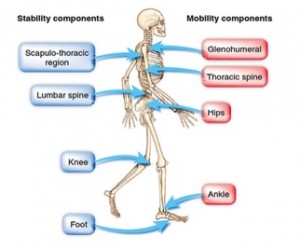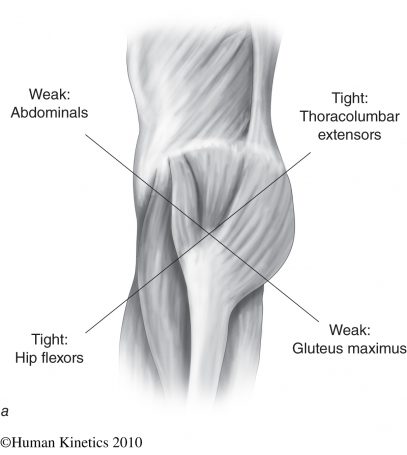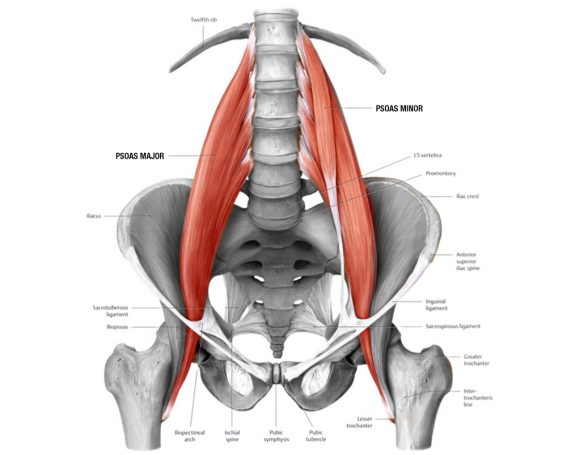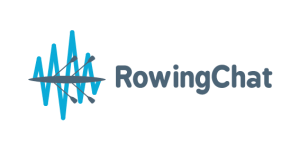Low Back Pain in Rowers
This article will examine possible causes of low back pain in rowers. I will lay the foundation of low back pain by examining the human body and the relationship the low back plays in rowing. The second article will follow up with specific exercises to strengthen the low back and core to help prevent injury or rehab from a low back injury.
Most rowers have experienced low back pain at one point or another during training. We have felt that twinge down our back, our muscles tighten up and spasm, or perhaps you feel low back “soreness” from high volume training. We may contribute this to being inflexible or having “tight hamstrings” or a lack of “core strength”. We are going to examine these possible causes in greater detail and provide a different perspective as to what may be causing these issues.
The most prevalent cause of low back pain in rowers is attributed to the repetitive movement of the rowing stroke. That will be the focus of this article.
Before we look at potential solutions for low back pain in rowers it is critical that we understand the role of the lumbar spine (low back) in the human movement game.
The low back is part of our core. Dr. Stuart McGill, the leading spine biomechanics expert in the world, summarizes the role of the core and its musculature: “These muscles act to stiffen the torso and function primarily to prevent motion. This is a fundamentally different function from those muscles of the limbs, which create motion. By stiffening the torso, power generated at the hips is transmitted more effectively by the core.” (1)
A Global Look At Our Anatomy
The Joint by Joint Theory by Gray Cook and Mike Boyle (2) takes a global view of the human body. It describes the body as a series of alternating joints stacked one upon the other whose primary function is either mobility or stability.

The role of the lumbar spine is to provide stability or stiffness to the core musculature and allow the transfer of force from the core to the limbs.
Well, what happens to rowers?
Most of us get out of the boat or off the rowing machine, head to work or class and sit most of the day and then head home and sit on the couch. Because we spend our entire sport sitting down we do not move through a full range of motion. Over time the joints that should have mobility stiffen up and the joints that should provide stability become more mobile. As a result, our ankles, hips, and thoracic spine become stiff and our low back becomes more mobile. A study in the British Journal of Sports Medicine, “Factors contributing to low back pain in rowers”, found that 94% of rowers showed hypermobility of the lumbar spine! (3)
We are asking our body to move from the release to the catch. The human brain is lazy, it wants to get from point A to B, as efficiently as possible. It does not care about the quality of movement and as a result, it will sacrifice whatever it has to, to get the job done.
The Effects Of Sitting
Sitting, over time can affect the musculature around the pelvis. This is most clearly depicted in Dr. Vladimir Janda’s Lower Crossed Syndrome. (4)

As the hip flexors and thoracolumbar extensors tighten and the gluteus maximus and abdominals weaken the following symptoms can result
- pelvis moves into an anterior tilt
- increased lumbar lordosis
- individual begins to experience tightness in the low back and pain
- “tightness” in the hamstrings
- inability to fully extend hips
Furthermore, the psoas muscle, which assists in hip flexion, can become weak which also contributes to low back pain.
Dr. Perry Nickelston highlights the critical role that the psoas plays in the human body, “The psoas has a fundamental stability role in the lumbar spine for axial compression and minimal movement function on the lumbar spine. The psoas is the only muscle to cross three zones (lumbar spine, pelvis, and hip). Probably makes it an important stabilizer.” (5)
In other words, the psoas is the only muscle in the entire body that goes from the lower body to the upper body and from the front to the back. It connects our hip to our lumbar spine. If the psoas is not functioning properly, then this will contribute to dysfunction in the low back.

Primary Causes of Low Back Pain in Rowers
Now that we have explained the role and function of the lumbar spine in the human body, as well as the effect sitting has on the pelvis, we can address the main causes of low back pain in rowers:
- Inability to reflexively stabilize through the core musculature
- Excessive flexion through the lumbar spine
- Lack of hip & thoracic mobility
- Repetitive movement of the rowing stroke and loading of the tissues of the lumbar spine
One other cause that can contribute to low back pain and injury for rowers is training early in the morning. After sleeping for several hours the intervertebral discs are more hydrated. The annulus is subjected to much higher stresses during bending under these conditions. The annulus’ main function is to seal the nucleus pulposus and evenly distribute any pressure and force imposed on the intervertebral disc. It is strongly recommended to avoid spine-bending movements upon waking.
In Part 2 of this post on Low Back Pain, I will cover how to reset some of these common problems rowers face and I will also cover some recommendations to training early in the morning to reduce the risk of injury to the low back.
Get Stronger. Row Faster.
Joe DeLeo is a former collegiate rower turned strength coach. His practice focuses on working with endurance athletes to get stronger so they can perform their best. He also has tremendous experience rehabbing rowing-related injuries and stresses. He focuses on three modalities to train his athletes and clients: bodyweight, kettlebells, and indian clubs.
He is a Certified Strength and Conditioning Specialist through the National Strength and Conditioning Association. He holds certifications as a Functional Movement Specialist, Rocktape FMT II, and is a Level I Girya with StrongFirst.
He lives in Providence, RI, where he can be found both off and on the water helping his athletes get stronger and faster! You can read his blog posts at www.leotraining.io
References
- McGill, Dr. Stuart. Core Training: Evidence Translating to Better Performance and Injury Prevention. Strength & Conditioning Journal. June 2010 – Volume 32 – Issue 3 – pp 33-46.
- Boyle, Michael. Cook, Gray. The Joint by Joint Concept. Movement. 2010. p 319-321. Print.
- Reid, Duncan A. Mcnair, Peter J. Factors contributing to low back pain in rowers. British Journal of Sports Medicine. Volume 34 – Issue 5.
- Page, Phil. Frank, Clare C. Lardner, Robert. Assessment and Treatment of Muscle Imbalance: The Janda Approach. 2010. Print.
- Nickelston, Dr. Perry. 3 Cool Things about your Psoai. Stop Chasing Pain.com. 1/2/2016.
- McGill, Dr. Stuart. Ultimate Back Fitness and Performance, 5th Edition. 2014. Print.
- Annulus Fibrosus. Spine-health.com. Website. 1/31/2016.
Read the previous articles in the series:
Rowing Injury Prevention Series: General Injury Prevention Tips
Rowing Injury Prevention Series: Rib Stress Fracture
Register for the Strength Coach Round Table podcast on RowingChat
No related episodes.


5 responses
Very welcome article, look forward to part 2. Thanks
Rowing can cause injury if you’re not well prepared. For your preparation, yoga and even foundation training can become really helpful.
Bruno, Thanks for your comment. Yoga does not lend itself well to rowers based on the demands of the sport. Rowers need reflexive stabilization and control. I encourage you to listen to a recent interview I did with the world’s leading spine biomechanics expert, Dr. Stuart McGill.